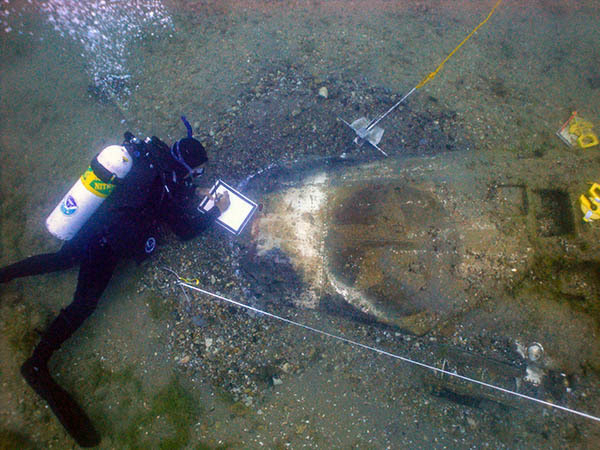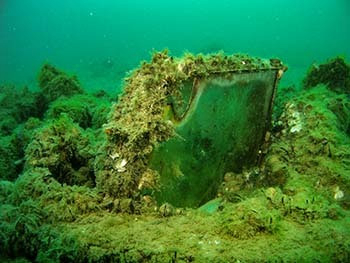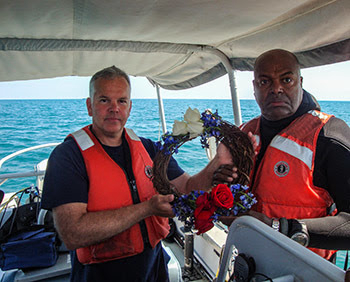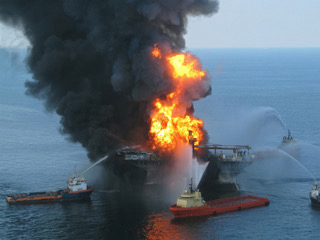Lake Huron Red Tails — Recovering Michigan’s History of the Tuskegee Airmen

Memorial dedication ceremony Saturday in Port Huron
The first African American pilots trained by the United States Army Air Corps earned their wings at Tuskegee Army Airfield in Alabama during World War II. Beginning in the spring of 1943, fighter pilots from Tuskegee received advanced training in Michigan.
The relative safety of Midwestern America, along with weather and geographical conditions that approximated what aviators could expect to encounter in Europe, encouraged the military to use airfields at Selfridge northeast of Detroit, and at Oscoda on the shores of Lake Huron.
Upon completion of training in Michigan, many Tuskegee airmen were immediately deployed to combat and bomber escort missions in Italy, North Africa and the Mediterranean.

Unfortunately, as with many similar training programs during World War II, dozens of accidents occurred in Michigan, resulting in the loss of both aircraft and crewmen. Fifteen Tuskegee airmen were killed while training in the state; five pilots were lost in Lake Huron, one in the St. Clair River, and nine as a result of land crashes or mid-air collisions.
Frank H. Moody was born in Oklahoma and grew up in Los Angeles. He earned his wings at Tuskegee in February 1944 and became part of an elite group of pilots belonging to the 332nd Fighter Group that would come to be known as “Red Tails.”
After being commissioned a second lieutenant in the United States Army, Moody was transferred to Selfridge Field for advanced training in the P-39 Airacobra.
Manufactured by Bell Aircraft Corporation, the Airacobra was 30 feet, 2 inches in length and had a wingspan of 34 feet. The single-seat airplane had a range of 650 miles, could reach speeds of 385 mph, and was armed with a 37-millimeter cannon, and four .50-caliber machine guns.
On April 11, 1944, Lt. Moody and three other pilots were conducting live-fire gunnery exercises over Lake Huron when his Airacobra gave off a trail of black smoke. Moody raised the nose of the aircraft slightly, then cartwheeled into the lake. He was killed instantly. His body was later found in the St. Clair River and was returned to Los Angeles for burial.
 |
On April 11, 2014, exactly 70 years to the day after the crash, David Losinski and his son Drew discovered a wrecked airplane while diving in Lake Huron. They located the forward instrument panel that contained the airplane’s radio call sign, which positively identified the wreck as the Airacobra flown by Moody.
Losinski invited Michigan Department of Natural Resources state maritime archaeologist Wayne Lusardi to participate in reconnaissance dives of the site. Lusardi then led several expeditions to the wreck site to document the aircraft and its associated artifacts.
In 2015, Lusardi and volunteer divers from the National Association of Black Scuba Divers surveyed the aircraft wreckage. The following summer, the wreckage was inspected using a remotely operated vehicle, and Lusardi began the investigation of a second Tuskegee Airacobra that crashed in the St. Clair River with the loss of Flight Officer Nathanial Porter Rayburg.
In 2018, the State of Michigan issued an archaeological recovery permit for Moody’s aircraft to the National Museum of the Tuskegee Airmen in Detroit.
A select group of artifacts was recovered from the site, including the 2-inch-thick bulletproof windshield, the starboard side door manufactured by Hudson Motor Company, the forward instrument panel containing 16 gauges, a wooden radio mast and two sections of steel drive shaft that connected the engine – that was placed behind the pilot – to the gear box and propeller in the forward fuselage.
 |
The state renewed the archaeological recovery permit in 2021, and Lusardi, together with Dr. Brian Smith of the Tuskegee Airmen’s Museum, continued documentation of the wreckage and removal of artifacts from Lake Huron.
A crew of volunteer divers and archaeologists from across the country participated in the project. Dozens of artifacts were measured, photographed and precisely mapped on the lake floor, and many were retrieved and transported to Detroit for conservation. All materials need to go through a lengthy process to preserve the integrity of the artifacts and allow them to be dried out and exhibited.
At 10:30 a.m. Saturday, Aug. 28, a memorial will be dedicated at International Flag Plaza in Port Huron to honor the 15 Tuskegee airmen killed in training accidents in Michigan. The Tuskegee Airmen Memorial Dedication Ceremonyis part of a series of events happening this week to honor the fliers.
The Tuskegee airmen’s impact on northeast Michigan, their contribution to the war effort and their ultimate sacrifice will long be remembered here and across the nation.
The documentation of Moody’s aircraft was much more than an archaeological investigation of a wrecked aircraft. It was a dive into history – and into a man’s life.
Only 22 years old when he was tragically killed in 1944, Moody was preparing to fight for his country. His death was not in vain.
The Tuskegee airmen overcame unimaginable obstacles. They learned to fly. They became officers and leaders of men.
They soared!






